SpaceX's 1st upgraded Dragon cargo ship docks itself at space station with science, goodies and new airlock
A SpaceX Dragon cargo ship arrived at the International Space Station today (Dec. 7) to deliver vital supplies for NASA and try something brand-new: park itself without the help of astronauts.
The private spaceflight company used a Falcon 9 rocket to launch CRS-21, the first flight to use the upgraded version of its Dragon cargo spacecraft, to the space station Sunday (Dec. 6) from NASA's Kennedy Space Center in Florida. The vehicle autonomously docked with the orbiting laboratory today at 1:40 p.m. EST (1840 GMT), parking at the zenith, or space-facing, side of the station's Harmony module.
Docking was delayed 10 minutes due to spotty communications with ground controllers during the last leg of the Dragon's trip. At the time of docking, the station was orbiting about 268 miles (431 kilometers) above the southern Indian Ocean, near Australia.
"The Cargo Dragon has officially made it to the International Space Station," NASA spokesman Gary Jordan said during a live webcast of the docking. "Hatches are expected to be opened later today for that first access to some of the incredible science that is on board."
Video: See SpaceX's 1st automated uncrewed docking at space station
Related: SpaceX launches upgraded Cargo Dragon to space station for NASA

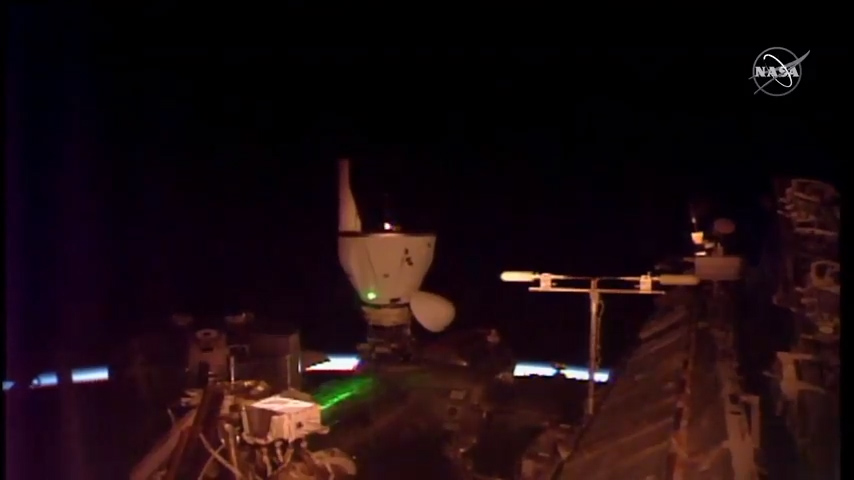
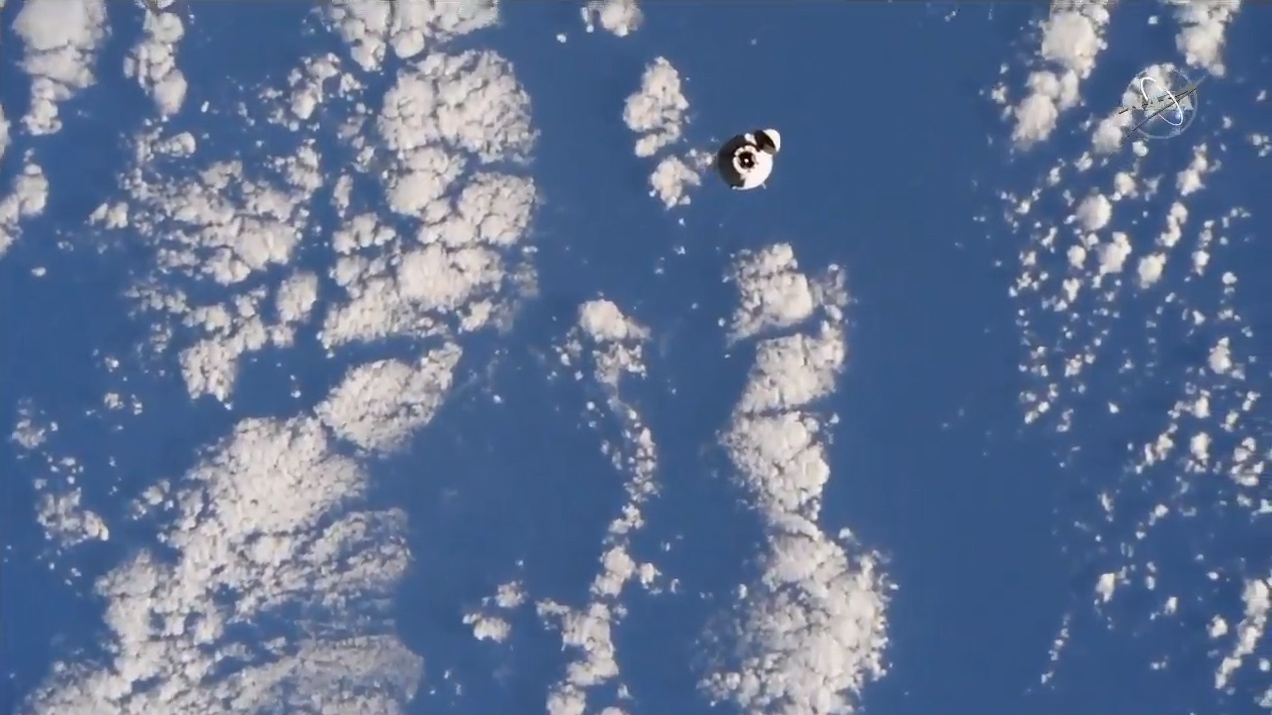

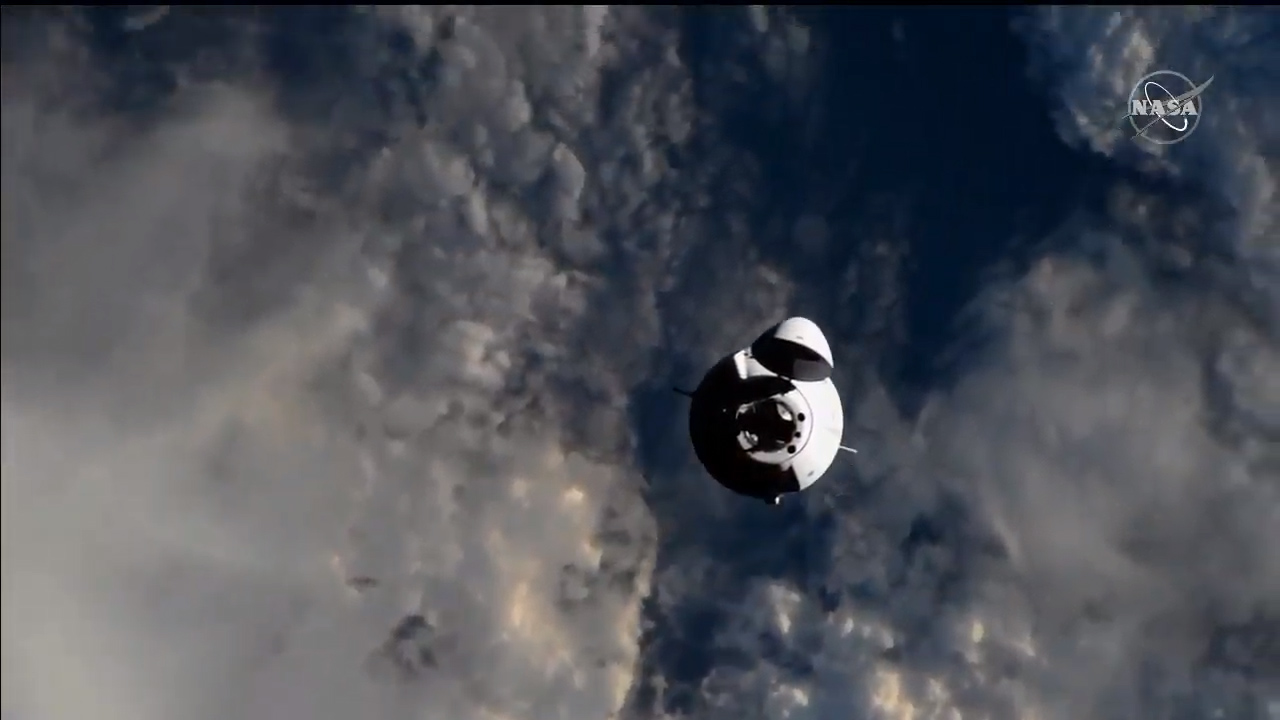

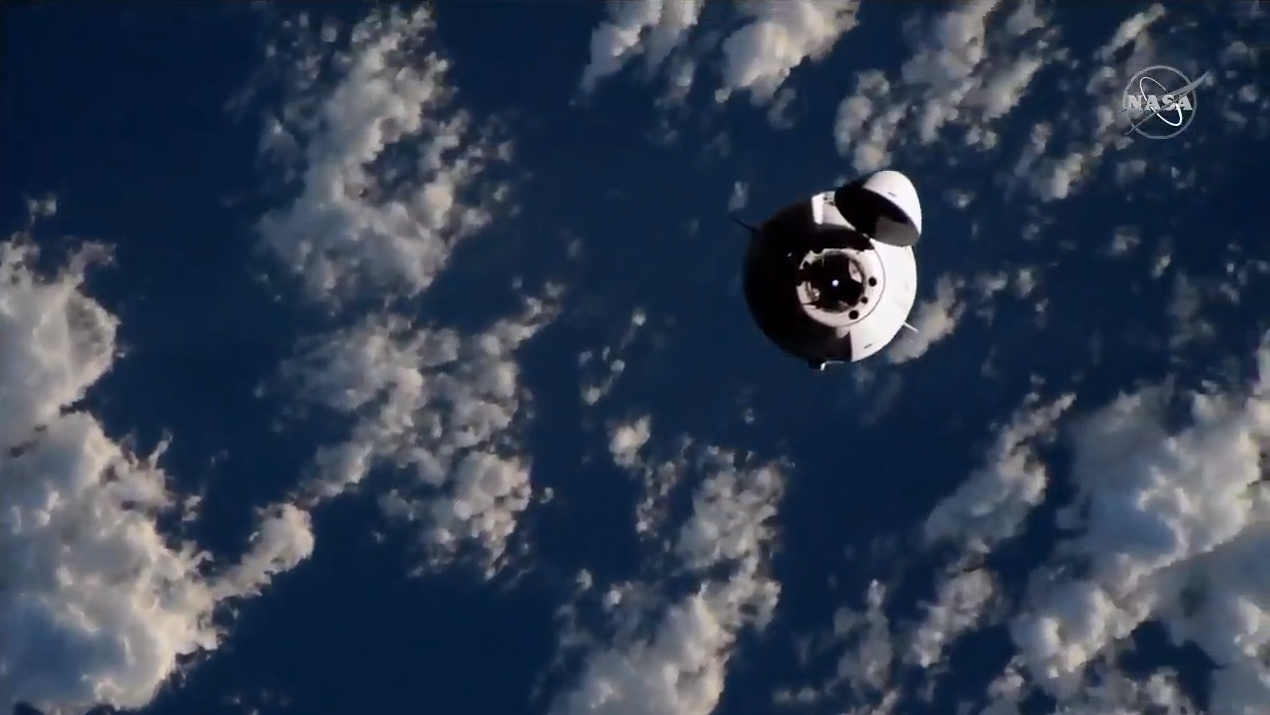
SpaceX's Dragon CRS-21 mission is the first supply ship to dock with the International Space Station without the help of astronauts, who typically use the station's Canadarm2 robotic arm to grapple incoming cargo vessels and manually attach them to the station. However, two Expedition 64 crewmembers — NASA astronauts Kate Rubins and Victor Glover — did monitor the docking from inside the station's Cupola observatory.
"I'd just like to say a huge congratulations to all of the teams that worked on SpaceX-21. It's pretty amazing to think that less than a month ago you docked four crewmembers to [the] International Space Station and now you're bringing a vehicle full of world-class science for us to execute," Rubins told mission controllers in Houston after the successful docking.
Breaking space news, the latest updates on rocket launches, skywatching events and more!
The arrival of the upgraded Dragon CRS-21 cargo spacecraft also marks the first time that two SpaceX Dragons have been docked with the International Space Station. A Crew Dragon spacecraft, which brought four astronauts to the space station in November on the Crew-1 mission, is also currently docked at the Harmony module.
"It's first time we'll have a couple of Dragons on board — we have the Crew Dragon; we'll have a cargo Dragon. So, again, Dragons everywhere you look. It'll be a lot of fun," Kenny Todd, NASA's Deputy program manager for the International Space Station, said during a prelaunch news conference on Friday (Dec. 4).
Related: SpaceX's Crew Dragon space capsule explained (infographic)
SpaceX has redesigned its workhorse Dragon cargo spacecraft not only to dock autonomously with the International Space Station, but also to have about 20% more cargo capacity and the ability to support more science experiments with additional powered lockers inside.
This Dragon will also return to Earth with a parachute-assisted landing in the Atlantic Ocean, rather than the Pacific, where Dragons have previously splashed down. The arrival site will allow SpaceX to return scientific samples and experiments to researchers faster than ever before, within four hours of splashdown, Kirt Costello, NASA's chief scientist for the International Space Station Program, said in the prelaunch news conference.
"The SpaceX Dragon cargo missions are always great for adding science we can do on ISS, especially when it comes to the life sciences, and this mission is a real heavyweight when it comes to that," Costello said. "If I had to describe this mission in my own words, it might be, 'cells, tissues and organoids, oh my!'"
On board the Dragon CRS-21 spacecraft are 6,400 lbs. (2,903 kilograms) of supplies and science investigations, including "tissue chips" for growing human cells in space and brain organoids, or small clusters of brain-like cells made using stem cell technology that will help scientists understand how spaceflight affects the human brain.
Related: Tissue chips and organoids: The weird science on SpaceX's CRS-21
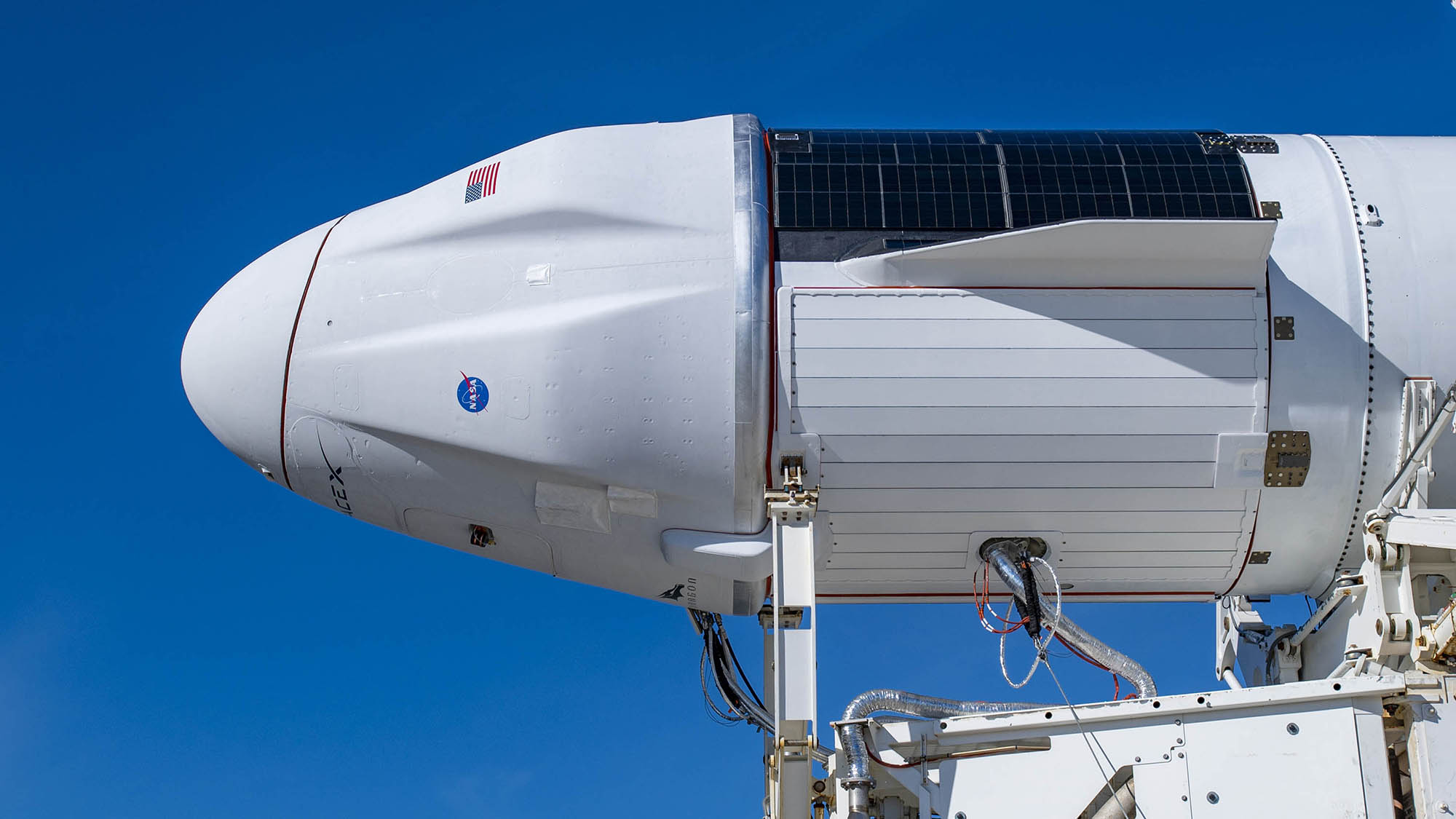


Also on board the Dragon CRS-21 spacecraft is a new airlock for the International Space Station. The Nanoracks Bishop Airlock will be the first commercial airlock at the orbital outpost, and astronauts will use it to transport science payloads to and from the outside of the space station.
"The Bishop Airlock is an airtight segment used for transfer of payloads between the inside and outside of the station. It provides payload hosting, robotics testing, and satellite deployment while also serving as an outside toolbox for astronauts conducting spacewalks," NASA officials said in a statement.
And because it was the last cargo launch of the year, NASA added some holiday goodies for the astronauts, including cherry blueberry cobbler, roasted turkey, macaroni and cheese, potatoes au gratin, corn, green beans and shortbread cookies with "sparkle gel" for decorating.
"The astronauts on board will be able to share and get together during the holiday season and celebrate with some new food that's going up on board CRS 21 Dragon," Jordan said during the live webcast.
The @SpaceX #Dragon resupply ship is packed with tons of gear and is also delivering Christmas goodies to the Exp 64 crew. https://t.co/yuOTrZ4Jut pic.twitter.com/Zpl1me6cA2December 7, 2020
The Dragon CRS-21 mission marks one more milestone for SpaceX; it's also the first cargo mission the company has flown under its second Commercial Resupply Services contract with NASA, called CRS-2.
SpaceX signed its first such contract with NASA in 2008, originally agreeing to launch 12 cargo missions to the space station between 2012 and 2016. NASA extended that contract in 2015 to include a total of 20 Dragon cargo flights, for a total cost of about $700 million. (Northrop Grumman, formerly known as Orbital ATK, also received a contract to fly NASA cargo on its Cygnus cargo spacecraft.)
"There's nine flights that we've contracted with for SpaceX to bring this new cargo Dragon ... and so that's what we're doing with this particular mission," Todd said.
According to Todd, the cargo Dragon will remain docked with the space station for about 35 days, which means it is scheduled to return to Earth sometime around Jan. 10.
The Crew Dragon currently docked with the station is expected to return to Earth in May. The next upgraded cargo Dragon, CRS-22, is expected to launch to the station in May as well.
Email Hanneke Weitering at hweitering@space.com or follow her on Twitter @hannekescience. Follow us on Twitter @Spacedotcom and on Facebook.

Hanneke Weitering is a multimedia journalist in the Pacific Northwest reporting on the future of aviation at FutureFlight.aero and Aviation International News and was previously the Editor for Spaceflight and Astronomy news here at Space.com. As an editor with over 10 years of experience in science journalism she has previously written for Scholastic Classroom Magazines, MedPage Today and The Joint Institute for Computational Sciences at Oak Ridge National Laboratory. After studying physics at the University of Tennessee in her hometown of Knoxville, she earned her graduate degree in Science, Health and Environmental Reporting (SHERP) from New York University. Hanneke joined the Space.com team in 2016 as a staff writer and producer, covering topics including spaceflight and astronomy. She currently lives in Seattle, home of the Space Needle, with her cat and two snakes. In her spare time, Hanneke enjoys exploring the Rocky Mountains, basking in nature and looking for dark skies to gaze at the cosmos.

